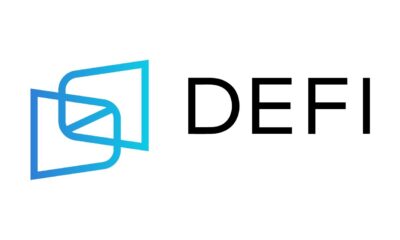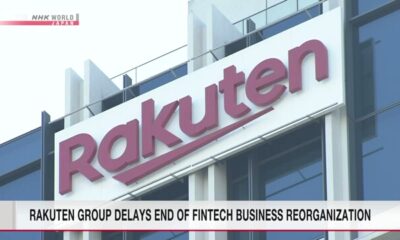Fintech
“It’s Always a Black Box”: The Ordeal of a Fintech Working with Synapse
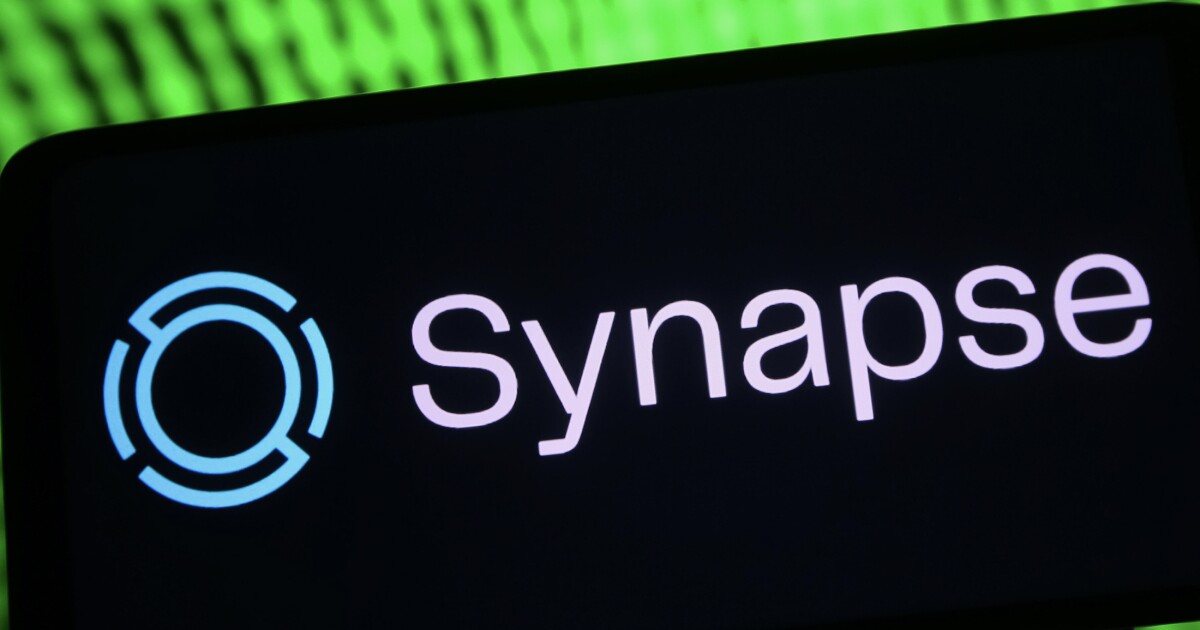
Turbulence in the banking-as-a-service sector is stimulating banks, fintech AND middleware providers carefully evaluate which customers or partners to choose.
Artem Fedyaev, CEO and co-founder of challenger bank GrabrFi, has seen this crisis firsthand. In 2021, he tried to launch GrabrFi as an offshoot of Grabr, the peer-to-peer marketplace he created in 2015. GrabrFi is designed for freelancers and remote workers who live outside the US but earn income from US-based companies. It allows users in 28 countries to open US checking accounts, where they can receive their salaries in US dollars.
Over the next three years, he partnered with three different middleware vendors, including Synapse, and rotated between several potential sponsor banks in an effort to bring his idea to market.
Fedyaev’s account of his experience highlights both the flaws and opportunities in the banking-as-a-service, or BaaS, middleware space. On the one hand, handing over some control to middleware companies has led to complications and opacity. Middleware providers are, by and large, vendors that connect banks to fintechs and provide matchmaking and technology services. It has often taken GrabrFi months longer than expected to integrate with a new provider.
On the other hand, the company’s current vendor, Synctera, has been instrumental in connecting GrabrFi to a partner bank relationship that has so far gone smoothly. In theory, middleware companies that have multiple partner banks can help fintech clients secure more than one BaaS sponsor. This was once seen as a luxury, but may be an existential necessity as more BaaS banks have problems with regulators and their partners are at risk serious disruptions.
GrabrFi’s story is also representative of an evolving mindset among financial services startups.
“In the past, fintechs looking for a bank partner prioritized speed and flexibility, where the faster they could go to market the better, and the more flexibility the bank had on terms the better,” said Jonah Crane, partner at Klaros Group. Now, “people are choosy about the banks they work with.”
When they conceived of GrabrFi, Fedyaev and his team estimated that there were 120 million people in other countries working overseas for U.S. companies and potentially receiving their salaries in U.S. dollars. Through his network of investors, Fedyaev spoke to several potential partner banks in 2021 about his idea for a challenger bank.
“They all said the same thing: it was a huge use case and a big market, but it was too risky for KYC. [know-your-customer] side because it is international and digitalized,” he said.
Their confirmation that the market was there encouraged him to continue. The next step was to talk to BaaS middleware vendors, most of whom echoed the banks’ concerns about the potential for fraud, money laundering, and other risks.
“Now I understand, but then I argued with them,” Fedyaev said.
GrabrFi has made progress with one company, Treasury Prime. Fedyaev says he spent four months building GrabrFi using technology and documentation provided by Treasury Prime, and had a sponsor bank willing to hold GrabrFi deposits. But a week before the launch in August 2021, the sponsor bank laid out a condition that GrabrFi saw as a deciding factor: 90% of accounts must be reserved for U.S. citizens and residents.
“For us it was not a deal,” Fedyaev said. “There was too much competition in the United States. Our vision was to go immediately into global space.”
In a statement, Treasury Prime said it has “always required that fintech clients have a direct contractual relationship with the bank. Therefore, the fintech must pass the bank’s due diligence and any other requirements related to account opening.”
When Fedyaev resumed conversations with BaaS providers who had rejected GrabrFi several months earlier, he found greater willingness.
“Things are changing rapidly in this industry,” Fedyaev said. “Everyone was looking for growth.”
Fedyaev claims that Synapse promised GrabrFi it could launch in three to four months. Instead, Fedyaev says it took GrabrFi more than a year to integrate the technology, wait for compliance approvals, and conduct due diligence, which included drafting disclosures, terms of use, and know-your-customer programs for each country where GrabrFi wanted to launch.
“Ultimately, it’s a good thing,” Fedyaev said. “Compliance is very important.”
But in his experience, some of the features Synapse had promised to support were still in development, such as the ability for users to transfer money via SWIFT.
Synapse did not respond to a request for comment. The company declared bankrupt in April and has been ever since mired in legal proceedings as millions of dollars in end-user funds remain unaccounted for.
“That’s how a lot of the BaaS providers phrase it. ‘Do you have this?’ The answer is ‘yes’ when they try to sell it to you,” Fedyaev said. “You sign the contract and realize they’re still building it.”
At the same time, Fedyaev acknowledges that many of these companies are startups themselves and may have underestimated the demand for their services.
Problems with Synapse persisted. A week before GrabrFi was set to go live in July 2022, Fedyaev learned through Synapse that his original sponsor bank would no longer accept new programs and that GrabrFi would have to switch to another. Integration with a second bank took another few months.
“Because we invested so much, we kept waiting, paying salaries, pushing marketing campaigns further and further, telling investors we’re almost there,” Fedyaev said. “Everyone is getting impatient.”
He said he had had no contact with the banks in question, nor with GrabrFi’s debit card issuer.
“It’s always a black box,” he said. “When you try to reach out to people through LinkedIn, they don’t respond because they don’t know who you are.”
Carey Ransom, managing director of BankTech Ventures, a venture capital fund, also has firsthand experience with BaaS. He was a co-founder of Payoff, a consumer loan now Happy Money, and the COO of an environmentally focused challenger bank. AspirationIn both cases, he worked directly with the banks.
“I’ve always had concerns about middleware companies that sneak in between fintech and banking partnerships,” Ransom said.
In his previous life as a fintech executive, “We had to make sure we knew who was opening accounts,” he said. “Middleware companies created this confusion on both sides and created risks that some fintechs don’t even realize.”
GrabrFi launched in January 2023. Fedyaev said it had amassed tens of thousands of customers in its first year. But problems arose. A shareholder Fedyaev trusted introduced him to Peter Hazlehurst, co-founder and CEO of Synctera, another middleware vendor, in May. Fedyaev decided to migrate.
“I liked that they didn’t push me to sign anything,” Fedyaev said. “They were transparent about what features they had and didn’t have.” Synctera also required a potential sponsor bank to feel comfortable with GrabrFi before signing the contract.
Fedyaev flew to Tulsa, Okla., to meet in person with Regent Bank, which has $1.7 billion in assets, something the bank prefers, said Steve Baker, chief innovation officer at Regent.
“Because of our experience, it wasn’t them doing due diligence on us and us saying, ‘Please work with us,’” Fedyaev said. “We wanted to make sure that if we did it a third time, we could scale long-term and there wouldn’t be any surprises a week before launch.”
He asked questions like, “If I acquire a million customers in Argentina next year, will regulators come after you?” and “Are you going to ask me to set a quota on how many accounts we can have?”
GrabrFi relaunched in January 2024 with Synctera and Regent. The overall migration took longer than the three to four months estimated (everyone says that, Fedyaev said) and took about seven months from the time GrabrFi presented its use case to Synctera. But half of that time was spent meeting with the bank and doing preparatory work to begin integration, Fedyaev said. GrabrFi uses a combination of compliance tools from Synctera and independently found vendors, such as Stripe Identity for international know-your-customer checks. All of its compliance policies are reviewed by Regent Bank.
For its part, Regent has been active in the BaaS sector for 20 months, with around 15 partners, most of which came through referrals from Synctera.
Fedyaev appreciates the direct line he has with Regent. For example, if Regent is suspicious of a transaction or account, “They contact us immediately,” he said. “We can make a change within 24 hours.”
He also likes the flexibility of the BaaS arrangement. While neither Regent nor Synctera offer remittances, they were open to GrabrFi finding a third party to develop such a feature, subject to approval. Fedyaev says remittance will launch this summer.
Crane expects Synctera’s model to represent the direction middleware is moving.
“I’m the facilitator, not the main counterpart,” he said. “Ultimately, [fintechs] will have a direct relationship with the bank and the middleware provider is an important technology layer.”
One challenge looming on Crane’s radar, however, is how these parties will come together to get small fintechs off the ground.
“As the bar gets higher on how to manage these partnerships in a compliant way, it becomes harder to see how it will work for small fintechs,” Crane said. “Banks want large-scale, well-established programs. It will be harder for new fintechs to find a home.”
Fintech
US Agencies Request Information on Bank-Fintech Dealings

Federal banking regulators have issued a statement reminding banks of the potential risks associated with third-party arrangements to provide bank deposit products and services.
The agencies support responsible innovation and banks that engage in these arrangements in a safe and fair manner and in compliance with applicable law. While these arrangements may offer benefits, supervisory experience has identified a number of safety and soundness, compliance, and consumer concerns with the management of these arrangements. The statement details potential risks and provides examples of effective risk management practices for these arrangements. Additionally, the statement reminds banks of existing legal requirements, guidance, and related resources and provides insights that the agencies have gained through their oversight. The statement does not establish new supervisory expectations.
Separately, the agencies requested additional information on a broad range of arrangements between banks and fintechs, including for deposit, payment, and lending products and services. The agencies are seeking input on the nature and implications of arrangements between banks and fintechs and effective risk management practices.
The agencies are considering whether to take additional steps to ensure that banks effectively manage the risks associated with these different types of arrangements.
SUBSCRIBE TO THE NEWSLETTER
And get exclusive articles on the stock markets
Fintech
What changes in financial regulation have impacted the development of financial technology?

Exploring the complex landscape of global financial regulation, we gather insights from leading fintech leaders, including CEOs and finance experts. From the game-changing impact of PSD2 to the significant role of GDPR in data security, explore the four key regulatory changes that have reshaped fintech development, answering the question: “What changes in financial regulation have impacted fintech development?”
- PSD2 revolutionizes access to financial technology
- GDPR Improves Fintech Data Privacy
- Regulatory Sandboxes Drive Fintech Innovation
- GDPR Impacts Fintech Data Security
PSD2 revolutionizes access to financial technology
When it comes to regulatory impact on fintech development, nothing comes close to PSD2. This EU regulation has created a new level playing field for market players of all sizes, from fintech startups to established banks. It has had a ripple effect on other markets around the world, inspiring similar regulatory frameworks and driving global innovation in fintech.
The Payment Services Directive (PSD2), the EU law in force since 2018, has revolutionized the fintech industry by requiring banks to provide third-party payment providers (TPPs) with access to payment services and customer account information via open APIs. This has democratized access to financial data, fostering the development of personalized financial instruments and seamless payment solutions. Advanced security measures such as Strong Customer Authentication (SCA) have increased consumer trust, pushing both fintech companies and traditional banks to innovate and collaborate more effectively, resulting in a dynamic and consumer-friendly financial ecosystem.
The impact of PSD2 has extended beyond the EU, inspiring similar regulations around the world. Countries such as the UK, Australia and Canada have launched their own open banking initiatives, spurred by the benefits seen in the EU. PSD2 has highlighted the benefits of open banking, also prompting US financial institutions and fintech companies to explore similar initiatives voluntarily.
This has led to a global wave of fintech innovation, with financial institutions and fintech companies offering more integrated, personalized and secure services. The EU’s leadership in open banking through PSD2 has set a global standard, promoting regulatory harmonization and fostering an interconnected and innovative global financial ecosystem.
Looking ahead, the EU’s PSD3 proposals and Financial Data Access (FIDA) regulations promise to further advance open banking. PSD3 aims to refine and build on PSD2, with a focus on improving transaction security, fraud prevention, and integration between banks and TPPs. FIDA will expand data sharing beyond payment accounts to include areas such as insurance and investments, paving the way for more comprehensive financial products and services.
These developments are set to further enhance connectivity, efficiency and innovation in financial services, cementing open banking as a key component of the global financial infrastructure.
General Manager, Technology and Product Consultant Fintech, Insurtech, Miquido
GDPR Improves Fintech Data Privacy
Privacy and data protection have been taken to another level by the General Data Protection Regulation (GDPR), forcing fintech companies to tighten their data management. In compliance with the GDPR, organizations must ensure that personal data is processed fairly, transparently, and securely.
This has led to increased innovation in fintech towards technologies such as encryption and anonymization for data protection. GDPR was described as a top priority in the data protection strategies of 92% of US-based companies surveyed by PwC.
Financial Expert, Sterlinx Global
Regulatory Sandboxes Drive Fintech Innovation
Since the UK’s Financial Conduct Authority (FCA) pioneered sandbox regulatory frameworks in 2016 to enable fintech startups to explore new products and services, similar frameworks have been introduced in other countries.
This has reduced the “crippling effect on innovation” caused by a “one size fits all” regulatory approach, which would also require machines to be built to complete regulatory compliance before any testing. Successful applications within sandboxes give regulators the confidence to move forward and address gaps in laws, regulations, or supervisory approaches. This has led to widespread adoption of new technologies and business models and helped channel private sector dynamism, while keeping consumers protected and imposing appropriate regulatory requirements.
Co-founder, UK Linkology
GDPR Impacts Fintech Data Security
A big change in financial regulations that has had a real impact on fintech is the 2018 EU General Data Protection Regulation (GDPR). I have seen how GDPR has pushed us to focus more on user privacy and data security.
GDPR means we have to handle personal data much more carefully. At Leverage, we have had to step up our game to meet these new rules. We have improved our data encryption and started doing regular security audits. It was a little tricky at first, but it has made our systems much more secure.
For example, we’ve added features that give users more control over their data, like simple consent tools and clear privacy notices. These changes have helped us comply with GDPR and made our customers feel more confident in how we handle their information.
I believe that GDPR has made fintech companies, including us at Leverage, more transparent and secure. It has helped build trust with our users, showing them that we take data protection seriously.
CEO & Co-Founder, Leverage Planning
Related Articles
Fintech
M2P Fintech About to Raise $80M

Application Programming Interface (API) Infrastructure Platform M2P Financial Technology has reached the final round to raise $80 million, at a valuation of $900 million.
Specifically, M2P Fintech, formerly known as Yap, is closing a new funding round involving new and existing investors, according to entrackr.com. The India-based company, which last raised funding two and a half years ago, previously secured $56 million in a round led by Insight Partners, earning a post-money valuation of $650 million.
A source indicated that M2P Fintech is ready to raise $80 million in this new funding round, led by a new investor. Existing backers, including Insight Partners, are also expected to participate. The new funding is expected to go toward enhancing the company’s technology infrastructure and driving growth in domestic and international markets.
What does M2P Fintech do?
M2P Fintech’s API platform enables businesses to provide branded financial services through partnerships with fintech companies while maintaining regulatory compliance. In addition to its operations in India, the company is active in Nepal, UAE, Australia, New Zealand, Philippines, Bahrain, Egypt, and many other countries.
Another source revealed that M2P Fintech’s valuation in this funding round is expected to be between USD 880 million and USD 900 million (post-money). The company has reportedly received a term sheet and the deal is expected to be publicly announced soon. The Tiger Global-backed company has acquired six companies to date, including Goals101, Syntizen, and BSG ITSOFT, to enhance its service offerings.
According to TheKredible, Beenext is the company’s largest shareholder with over 13% ownership, while the co-founders collectively own 34% of the company. Although M2P Fintech has yet to release its FY24 financials, it has reported a significant increase in operating revenue. However, this growth has also been accompanied by a substantial increase in losses.
Fintech
Scottish financial technology firm Aveni secures £11m to expand AI offering
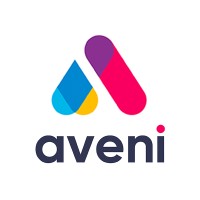
By Gloria Methri
Today
- To come
- Aveni Assistance
- Aveni Detection
Artificial intelligence Financial Technology Aveni has announced one of the largest Series A investments in a Scottish company this year, amounting to £11 million. The investment is led by Puma Private Equity with participation from Par Equity, Lloyds Banking Group and Nationwide.
Aveni combines AI expertise with extensive financial services experience to create large language models (LLMs) and AI products designed specifically for the financial services industry. It is trusted by some of the UK’s leading financial services firms. It has seen significant business growth over the past two years through its conformity and productivity solutions, Aveni Detect and Aveni Assist.
This investment will enable Aveni to build on the success of its existing products, further consolidate its presence in the sector and introduce advanced technologies through FinLLM, a large-scale language model specifically for financial services.
FinLLM is being developed in partnership with new investors Lloyds Banking Group and Nationwide. It is a large, industry-aligned language model that aims to set the standard for transparent, responsible and ethical adoption of generative AI in UK financial services.
Following the investment, the team developing the FinLLM will be based at the Edinburgh Futures Institute, in a state-of-the-art facility.
Joseph Twigg, CEO of Aveniexplained, “The financial services industry doesn’t need AI models that can quote Shakespeare; it needs AI models that deliver transparency, trust, and most importantly, fairness. The way to achieve this is to develop small, highly tuned language models, trained on financial services data, and reviewed by financial services experts for specific financial services use cases. Generative AI is the most significant technological evolution of our generation, and we are in the early stages of adoption. This represents a significant opportunity for Aveni and our partners. The goal with FinLLM is to set a new standard for the controlled, responsible, and ethical adoption of generative AI, outperforming all other generic models in our select financial services use cases.”
Previous Article
Network International and Biz2X Sign Partnership for SME Financing
IBSi Daily News Analysis

SMBs Leverage Cloud to Gain Competitive Advantage, Study Shows
IBSi FinTech Magazine

- The Most Trusted FinTech Magazine Since 1991
- Digital monthly issue
- Over 60 pages of research, analysis, interviews, opinions and rankings
- Global coverage
subscribe now
-

 DeFi12 months ago
DeFi12 months agoDeFi Technologies Appoints Andrew Forson to Board of Directors
-

 Fintech12 months ago
Fintech12 months agoUS Agencies Request Information on Bank-Fintech Dealings
-

 News1 year ago
News1 year agoBlock Investors Need More to Assess Crypto Unit’s Earnings Potential, Analysts Say — TradingView News
-

 DeFi12 months ago
DeFi12 months agoSwitchboard Revolutionizes DeFi with New Oracle Aggregator
-

 DeFi12 months ago
DeFi12 months agoIs Zypto Wallet a Reliable Choice for DeFi Users?
-

 News1 year ago
News1 year agoBitcoin and Technology Correlation Collapses Due to Excess Supply
-

 Fintech12 months ago
Fintech12 months agoWhat changes in financial regulation have impacted the development of financial technology?
-

 Fintech12 months ago
Fintech12 months agoScottish financial technology firm Aveni secures £11m to expand AI offering
-
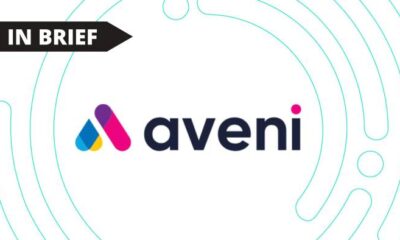
 Fintech12 months ago
Fintech12 months agoScottish financial technology firm Aveni raises £11m to develop custom AI model for financial services
-

 News1 year ago
News1 year agoValueZone launches new tools to maximize earnings during the ongoing crypto summer
-

 Videos5 months ago
Videos5 months ago“Artificial intelligence is bringing us to a future that we may not survive” – Sco to Whitney Webb’s Waorting!
-

 DeFi1 year ago
DeFi1 year agoTON Network Surpasses $200M TVL, Boosted by Open League and DeFi Growth ⋆ ZyCrypto

